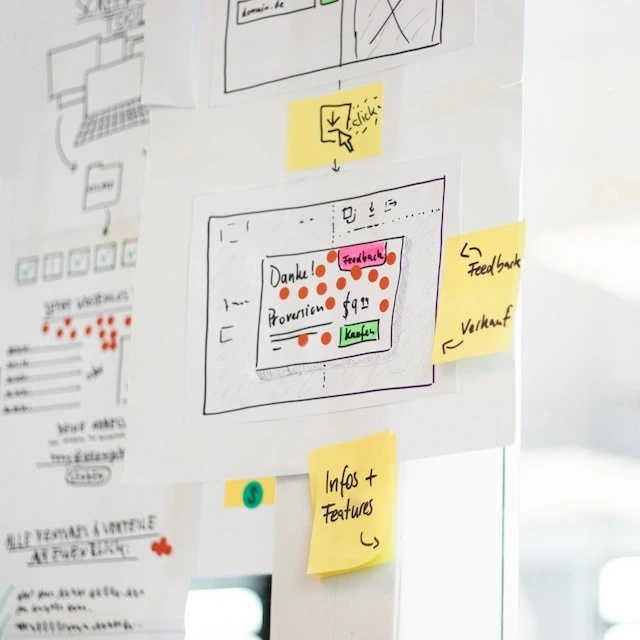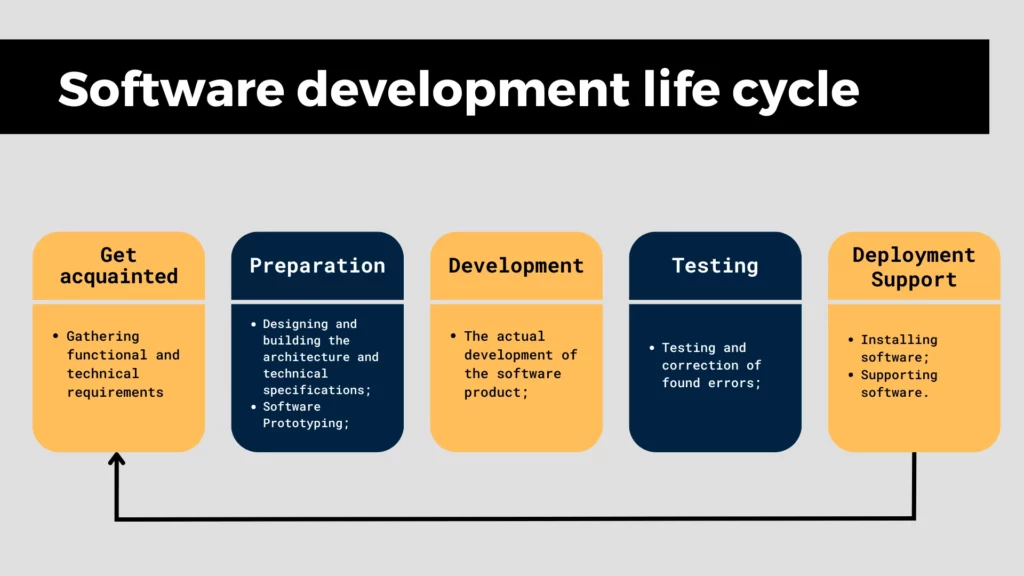Custom software development and design is the main activity of the enterprise. The main purpose of software development is to produce a software product that meets the functional and technical specifications of the customer, is quality-tested and flexible for future changes and maintenance.
In this post, our goal is to familiarise you with different approaches to the software development process to help you understand the specifics of collaboration with IT vendors in each case.
Software Development Process
PNN Soft has 20 years of experience in software development for desktop, web and mobile solutions. Thanks to the old one, the company has a well-established process of realization of technical tasks. The success of a software development project largely depends on the correct methodology choice for its development and management. Depending on the project specifics, we use flexible software development methodologies and practices based on Agile, DevOps, CI, and other. Our specialists use effective and advanced methodologies, including: Scrum, RUP, CI and others.
What is a model in software engineering?
By types of software development models, here, we mean different development methodologies, which implies a structural understanding of the process and the sequence of actions the team needs to perform. In addition, selecting a particular development approach inevitably impacts testing – it specifies what testing technique will be used.
If stakeholders do not have a plan for cooperation in mind, it frequently results in delays, differences in expectations and arising misunderstandings between businesses and engineering teams. Your first step implies understanding software development lifecycle phases (things should be done regardless of chosen collaboration model). Secondly, the aim is to decide a particular development methodology in line with your company’s needs. So let us consider the first topic in more detail.
Main phases of the SDLC and their specifics
Depending on the size of employees/vendors, goals and the complexity of the project, some of them may run in tandem, complementing each other and being slightly modified. However, generally, the following stages are mandatory:
- Analysis and initial planning. An initial task is to define whether the project fits the company’s mission on a larger scale and what would be the approximate cost of it. A result of planning is establishing a scope of work – that’s where your ideas, goals, and motivations for the upcoming project are formulated clearly.
- Requirements. To come up with the technical requirement for the solution, you need to think over the concept of the platform: which issues it solves, who will use it, and what kind of data (output/input) is necessary. At this stage, teams which work based on Agile start planning iterations.
- Design and prototyping. The focus of the designers’ team will be functions and flow, not the pleasant UX and aesthetics yet. It’s about mapping out how various interactions will operate in your future solution and validating core ideas.
- Development. The most responsible phase begins: here, the team of developers concentrates on the following SOW as precisely as possible. At PNN Soft, we emphasise building efficient software consistently and scope creep prevention.
- Testing. This process does not start from this moment, since initial testing was conducted beforehand during design and development. And now, it has acquired more in-depth features: beta testing, analysing the UX tool’s engagement potential, and enhancing the responsiveness of the interface.
- Deployment. The PNN engineers utilise Application Release automation tools to optimise this stage and deliver solutions to end-users.
- Maintenance and Updates. Post-launch confirms an unlimited lifecycle of the development process. The PNN team carefully analyses users’ feedback to provide them with desired sets of functions, working continuously to improve the system’s operations.
Project development models:finding a perfect fit
- Waterfall. Implies following different SDLC phases in a concrete, planned sequence, often times with no space for flexibility. The linear approach of Waterfall is applicable when projects’ aims, features, and functions are relatively stable during your collaboration with developers.
For whom may suit: large enterprises or governmental agencies, which prefer to sign documents on the project plan before proceeding with development.
- Agile. By contrast, presupposes cross-functional sprints lasting from a couple of weeks to a few months. Your SOW might not be flawlessly precise; instead, the task is to analyse feedback, promptly react to customers’ needs and be able to adjust to changes along the way. Among different software testing models, Agile can boast a high speed of detecting and solving bugs during short iterations.
For whom may suit: companies who want to test theories or deliver prompt updates to their customers.
- Incremental and Iterative. As the name implies, the model is a middle ground between two previous approaches. Companies try to follow an initial plan, develop and deliver core functions set and then provide users with extra features in line with feedback.
For whom may suit: for teams who have precise requirements and expectations but still want to have more flexibility than Waterfall allows.
- V-shaped. It’s an enhanced Waterfall model with an emphasis on testing. Each project stage finishes with performance and requirements verification, so the software is carefully tested before going further.
For whom may suit: for businesses with a small project requiring a relatively tight scope.
At PNN Soft, we aim to align with your company’s needs and business specifics. It determines the choice of process models in software engineering. If you want to discuss future collaboration, please, send us a request by filling out the form below.


